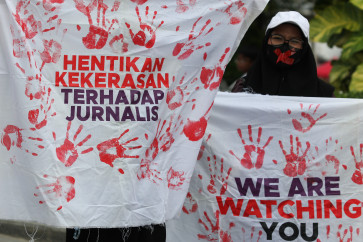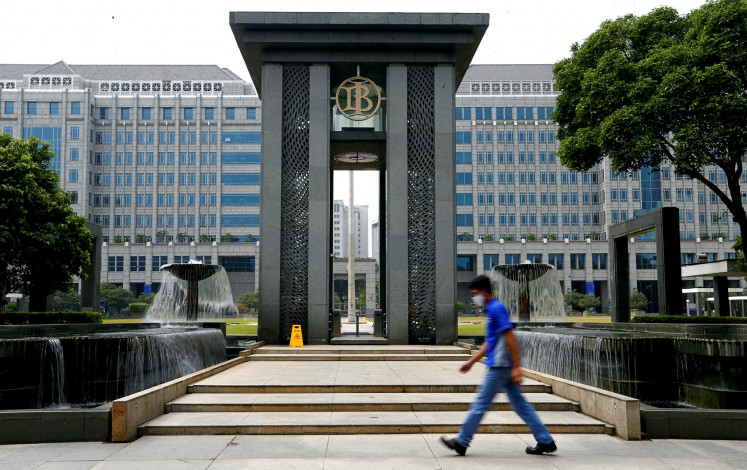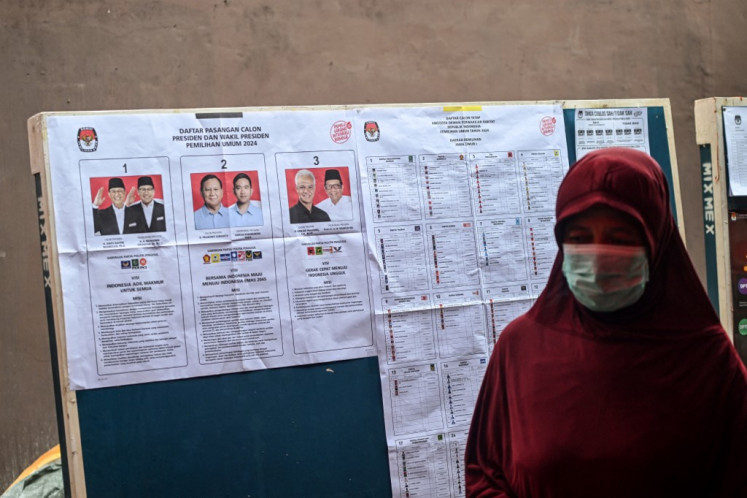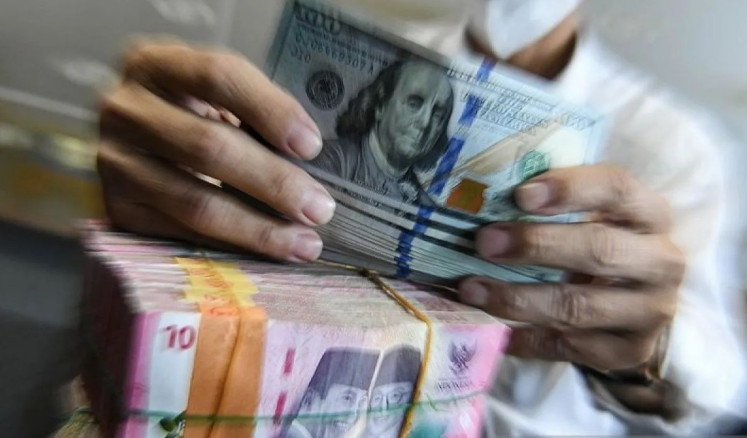Popular Reads
Top Results
Can't find what you're looking for?
View all search resultsPopular Reads
Top Results
Can't find what you're looking for?
View all search resultsRecalling the killing times
Director of the Royal Netherlands Institute of Southeast Asian and Caribbean Studies (KITLV) Gert Oostindie is not a man for euphemisms
Change text size
Gift Premium Articles
to Anyone
Director of the Royal Netherlands Institute of Southeast Asian and Caribbean Studies (KITLV) Gert Oostindie is not a man for euphemisms.
Gert Oostindie’s particular dislikes are words that soften war, like “police action”. They sound so comforting — cops catching naughty people, putting them before the courts and keeping citizens safe.
There was nothing so civilized when the Dutch returned to Indonesia in 1945 determined to regain their former colony after three years of Japanese occupation.
There were two “police actions” during the four-year conflict: Operation Product between July 21 and Aug. 5, 1947, and Operation Kraai (Crow) from December 1948 until January 1949 when president Sukarno was arrested in Yogyakarta. Indonesians had another term: Agresi Militer Belanda (Dutch Military Aggression).
Oostindie is the director of the Royal Netherlands Institute of Southeast Asian and Caribbean Studies (KITLV). With a team of researchers he’s been collecting “ego documents”, the letters, diaries, memoirs and other accounts written by the veterans of the war, now published as Serdadu Belanda Di Indonesia 1945-1950 (Dutch Soldiers in Indonesia 1945-1950).
When the units executed unarmed civilians and prisoners, raped women, stole property and destroyed homes their actions were labelled “excesses”.
“Our finds total about 100,000 pages,” Oostindie said. “Twenty percent speak of war crimes.
“The Netherlands government now acknowledges this but estimates of victims are in the hundreds. Sukarno told the United Nations it was 40,000. Until there’s further research we just don’t know.”
Oostindie, 61, says he hoped the book would stimulate young Indonesian academics to research “history from below” — and quickly. The last known extrajudicial executions occurred in Peniwen in February 1949, so witnesses are unlikely to live much longer.
It has taken decades for the Dutch to confront their past. There were mutterings about massacres over the years, but few were keen to investigate.
“The attitude was we lost, you won, so let’s look at the future not the past,” said Oostindie. “They knew the war had been on the wrong side of history, but didn’t want to ask why.”
Oostindie said the door to the dark secrets was first pushed open in 1969 by a former veteran, Joop Hueting, who used a television program to tell of the atrocities he’d witnessed.
He alleged the incidents were not occasional outrages by unhinged individuals who’d disobeyed orders and were then court martialed, but were structured and widespread.
Hueting’s claims both shocked and angered. He’d broken the military code that what happens on the battlefield stays there.
But a new generation watching the program had different values including, ironically, protesting against the war in Vietnam. The Dutch were becoming known as world leaders in human rights so the veteran’s stories had to be investigated.
The government’s response, according to Oostindie, was a “quick and dirty” three-month inquiry searching Dutch archives. It was called a Memorandum on Excesses and concluded that although there had been “incidents”, these were not war crimes.
Years later lawyer Liesbeth Zegveld successfully sued the Dutch state on behalf of survivors for atrocities committed in the village of Rawagede (now Balongsari) on the north coast of Java in 1947.
Further civil cases were tried concerning executions in South Sulawesi in 1946 by troops commanded by the British-trained commando Captain Raymond Westerling, originally a hero in Holland but later a villain in Indonesia. Three years ago compensation of €20,000 (US$22,484) was paid to each surviving victim.
An official apology came from the Dutch government, although Oostindie says the official position is that the crimes were not structural.
Zegveld said she had won the case for one of the women raped at Peniwen who was 18 at the time. However, the state has appealed.
“Since 2008 we are litigating on behalf of widows of men executed by the Dutch during the independence war,” she said. “We are also assisting a torture victim; his case is still pending.”
Surprisingly the Indonesian government seems disinterested in helping pursue other cases or fund inquiries.

Gert Oostindie (Courtesy of KITLV)
“There’s still a lot of reticence,” said Oostindie. “The foreign minister [Retno Marsudi, a former Ambassador to the Netherlands] has told me more research is not a priority. Like the Dutch, they don’t want to jeopardise relations. Maybe they fear it will open Pandora’s box.”
After the defeat of the Japanese and the proclamation of independence, Indonesia plunged into a period of chaos known as bersiap (be prepared) as revolutionaries fought the British who had come to help reinstall the Dutch government and open internment camps.
The Japanese had imprisoned thousands of Europeans, Chinese and Eurasians known as “Indos”. Many were killed by Indonesian militias who ran amuck.
Oostindie said the Dutch wanted Indonesia and its wealth to help them recover from the war in Europe.
“Otherwise the Netherlands would be demoted to the rank of Denmark, a country without a colony, as one document claimed,” he said, “even though anti-colonialism was then sweeping the world.”
He said the paternalistic Dutch thought Indonesians loved them and needed them to accomplish their mission of repairing the nation and building schools and bridges.
Indonesian propaganda, however, showed them as monsters, drunk, brutal and crude, but many Dutch soldiers were ill-prepared farm boys lost in a world they didn’t recognize. Not all were involved in atrocities.
“They’d never seen a dark-skinned person, knew nothing of Islam and were unsure why they had been sent to Indonesia. Their leaders had problems understanding the Indonesian reality,” he said.
“It’s important to get behind the caricatures and see what was happening. I feel the war was wrong, but I don’t know how I would have thought in 1945. Can you find a war without war crimes? I’m pessimistic.”










